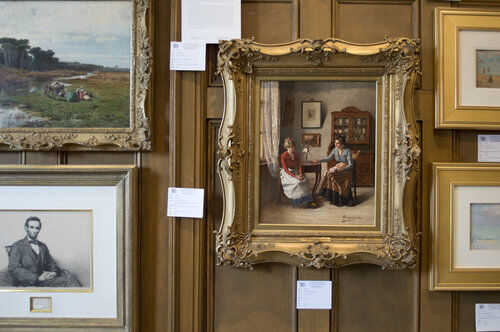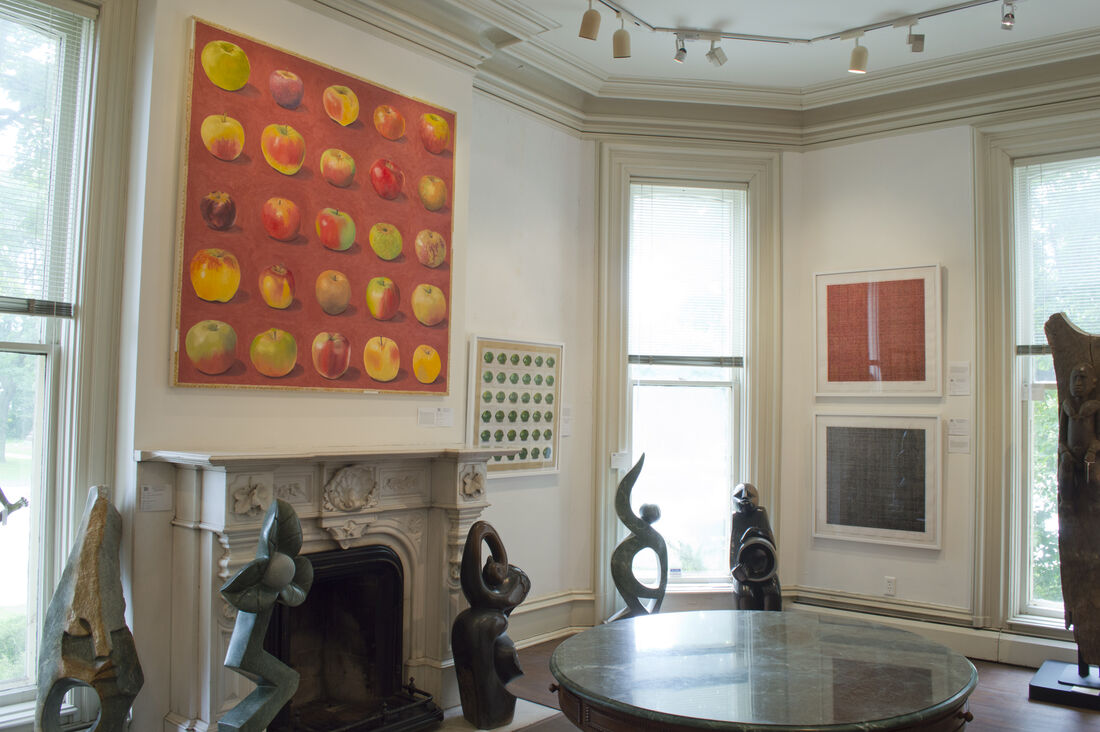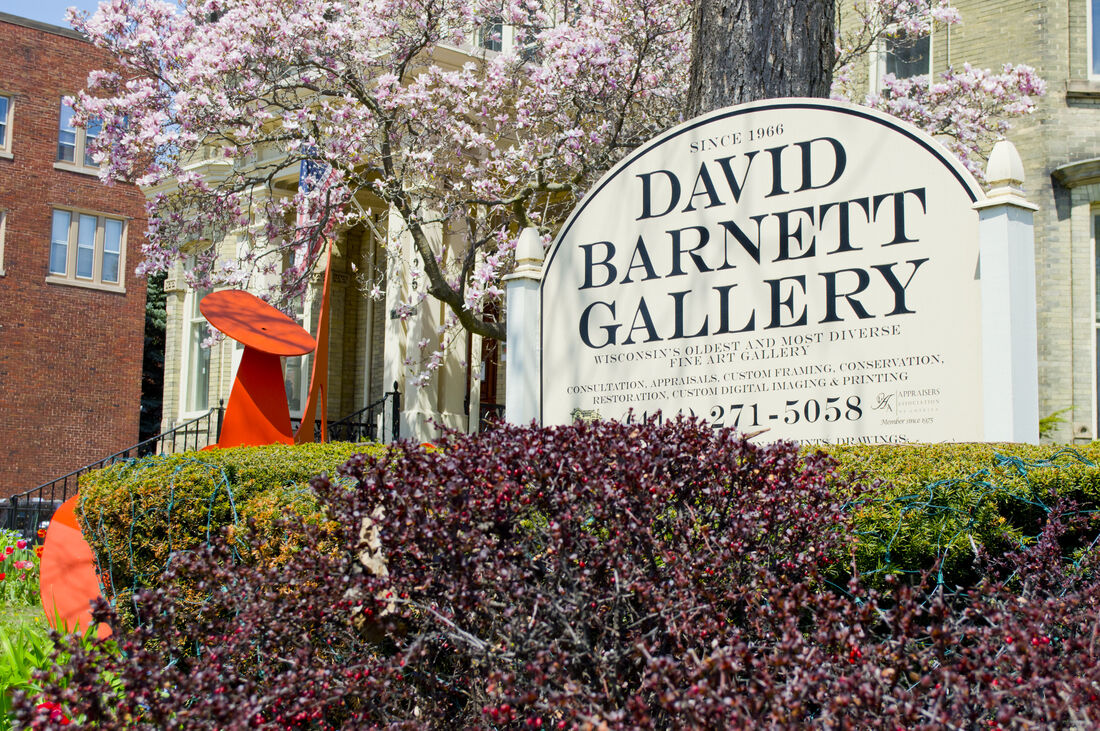How does fine art appraisal work
How Does a Fine Art Appraisal Work?
Have you ever wondered what your artwork is worth? Do you need an official evaluation of your fine art property for your insurance company? Would you like to know for how much you could sell your art? Are you donating art to a non-profit? An appraisal can provide the information you need to make the best decision for your art! Here are some common questions we receive regarding the appraisal process, as told through the experience of a fine art appraiser.

Installation view at the David Barnett Gallery.
What is an appraisal?
An appraisal is an opinion of the value of an object, in this case a work of art. The value of the work of art is defined as “the monetary relationship between properties and those who buy, sell, or use those properties.” Essentially, this definition acknowledges that the value of an artwork is not tied to a mathematical formula, nor is it rigid over time, but that the value changes based on the relationship buyers and sellers have with that type of object. For example, if a relatively unknown artist has a fantastically high auction sale, this would drive up the value of the artist’s work, even though the work itself has not changed. Value fluctuates with time and market conditions.
What is an appraiser?
An appraiser is a person who, according to the Uniform Standards of Professional Appraisal Practice, “is expected to perform valuation services competently and in a manner that is independent, impartial, and objective.” This means that the appraiser is somebody who gives their opinion on the value of an artwork based on market evidence, without considering their biases (likes/dislikes). A professional appraiser would consider comparable auction and other sales records, as well as the condition, of, for example, a Giacometti sculpture for an appraisal and would not increase or decrease that found value because of their opinion on Giacometti’s work.
What are the different types of appraisal?
Fine art appraisals can be performed for various purposes depending on what your future plans are for the object(s). The most common appraisal type is an appraisal for insurance value, which is defined as the “current market replacement value in a retail gallery.” The easiest way to explain would be to imagine that you had a work of art in your home and it was destroyed in a fire. How much would it cost to replace that artwork with a comparable work? This takes into account retail prices advertised by galleries and is often the highest of all evaluations. An insurance appraisal is often requested by people who wish to keep their art (as opposed to selling it), keep it safe, and keep their investment in the art safe.
Almost as common as the insurance appraisal is the appraisal for resale value, which is defined as the “fair market value for purposes of resale.” This evaluation finds what the wholesale value of the artwork. Essentially, this is what you might expect to sell the piece for. However, this does not guarantee that the piece will sell for that much in any given period of time, nor that the piece will be saleable at all.
Next is an appraisal for donation purposes, defined as the “fair market value for purposes of donation.” If you are planning to donate artwork or other property to a non-profit, and would like to use the value of the artwork donation as a tax deduction, this appraisal type is for you. This type of appraisal is similar to a resale appraisal in that it does not consider retail prices as much as it does auction and previous sales records. It is also important to note that the only tax deduction that can be taken by an artist donating their own work is the literal cost of materials to produce the art, not taking into account the time and creativity an artist puts into their work. You can read more about this issue here: https://hyperallergic.com/285128/why-cant-artists-deduct-donated-artworks-from-their-taxes/
Other, less common appraisal types include appraisals for estate tax, equitable division of property, and liquidation.

"Tom Shelton: The Fruits of Analysis" at the David Barnett Gallery, featuring works by analytical artist Tom Shelton and some Shona sculptures from Zimbabwe.
How do they work?
Appraisals are based on market research. This involves consulting auction records, private sales records, artworks currently for-sale, and more to find comparable objects to the object being appraised. Provenance, or history of ownership and of exhibitions, can also contribute to the value to an art object. Different research is emphasized for different types of appraisals. The appraisal includes a descriptive portion, detailing the factual elements of the piece being appraised, and then an opinion of the monetary value of the piece. Appraisals are typically good for ten years, though different appraisal users may need them to be updated more or less frequently based on their purpose and the market conditions for particular artists.
Why do I need an appraisal?
Insurance companies frequently require appraisals to insure valuable objects. An outside expert’s opinion has much weight when claims of damage or loss are made. When donating artwork, appraisals are necessary for the purpose of accurate tax deductions and evidence in the event of an audit. Many nonprofits that accept art donations also require an appraisal for their own records. You may also need an appraisal to know how much you should receive in the resale of a work of art, and can be used to your advantage in consignment negotiations. Lawyers may also request appraisals in division of property cases, as might the IRS in estate tax purposes.

Appraisers Association of America
How are appraisers certified? Who can become an appraiser?
Appraisers, in order to be members of and accredited by various appraisal associations (Appraisers Association of America, American Society of Appraisers, International Society of Appraisers, Appraisal Foundation, and more), have to take courses to receive their certification and complete continuing education classes to remain certified. Different appraiser associations have different requirements, but many also require an invitation to the association by a current member in order to guarantee that candidates for certification have a good reputation.
Many appraiser associations require and promote the Uniform Standards of Professional Appraisal Practice (USPAP). This is a set of rules, procedures, and clarifications for the legal and technical aspects of appraising. Appraisers with this certification are most trusted by the IRS for important tax purposes, and by insurance companies for claims.
Why is art worth x?
The value of art is an ever-changing and elusive thing to pin down. To explain it in terms of appraisals and market value, a work of art is worth what people have, in the past, paid for it. If someone purchases an artwork for $100,000 at an auction, an appraiser researching that artwork or other similar artworks would take that $100,000 sale into consideration. If an artwork does not sell at an auction, it essentially says to the market that the artwork is worth less than the starting price or low estimate. Estimates are frequently based on previous sales, though it is important to note that sometimes auction estimates are listed below market value as a way to entice more bidders. To an appraiser, an unbiased resource of market value, a work of art is worth what somebody paid for it.
However, pinning down the total value of an artwork does not have to stop at monetary value. For example, many people get significant enjoyment out of artwork and would factor that into the worth of the artwork. There may be significant and memorable stories attached to the artist, artwork, or purchase of the artwork that adds value. The artist may have been particularly influential to other artists and the course of art history, giving it historical value. An appraisal, because it is an objective and unbiased document, does not take into consideration these types of value, even though they may be important in choosing an artwork and wanting to evaluate it in the first place.
Is an appraisal the same as an authentication?
No, an appraisal is not the same as an authentication. Many appraisers perform the appraisals upon the assumption that the artwork is authentic. Authentications are performed on a case-by-case basis, and often involve more than one person working together to provide expertise and their opinion. Some appraisers can be authenticators because of their expertise in a certain artist’s work, but most do not authenticate art. Many are cautious of doing authentications at all nowadays because of the technology and information available to art forgers, and the high legal stakes behind the enormous value of certain artists’ (like Andy Warhol’s or Pablo Picasso’s) work.
From ArtNews: “In 2011, when the Warhol Foundation decided to shutter its Art Authentication Board, the reigning authority on Warhol authenticity, to focus on its grant-making activities, it said the move was in part motivated by a desire to avoid lawsuits from collectors who disagreed with its judgments. Subsequently, authentication boards for Jean-Michel Basquiat, Keith Haring, Robert Motherwell, Roy Lichtenstein, and Alexander Calder have followed suit.”

"Together Forever," opal stone sculpture by Tendai Marowa & Stanley Chideu, Zimbabwe. Wassily Kandinsky woodcut in background.
Is it worth it to have my art appraised?
This question often surfaces when discussing compensation for appraisal work. Many want to know: will the artwork be worth more than the cost of the appraisal? Unfortunately, this is not a question that can be answered until the appraisal is complete. In accordance with USPAP, an appraiser is not able to give opinions on the value of an artwork without doing appropriate market research, no matter how they may deliver that opinion. For example, if the appraiser’s quoted fee for appraisal research is $250, the appraiser cannot tell a client that their artwork will be worth more than that before doing the research itself.
Appraisers nearly always charge for appraisals based on either the amount of research required or a flat fee for certain types of pieces, and it is never based on the value of an artwork. An appraisal will cost the same whether the artwork is worth $100 or $100,000! If this were not the case, and the appraisal fee was based on the result, it would be a serious conflict of interest and against the USPAP code of ethics.
How can I get an appraisal at the
David Barnett Gallery?
David Barnett has been a member of the Appraiser’s Association of America since 1975 and is compliant with and up to date in courses for the Uniform Standards of Professional Appraisal Practice. He is one of only approximately 2,000 personal property appraisers with USPAP certification in the United States. To schedule an inspection appointment and receive a free appraisal quote, send an email to inquiries@davidbarnettgallery.com or call us at 1 (414) 271-5058. We serve the greater Milwaukee area in-person and the global art world online—we have even done an appraisal for clients in Paris, France!
We look forward to working with you!

